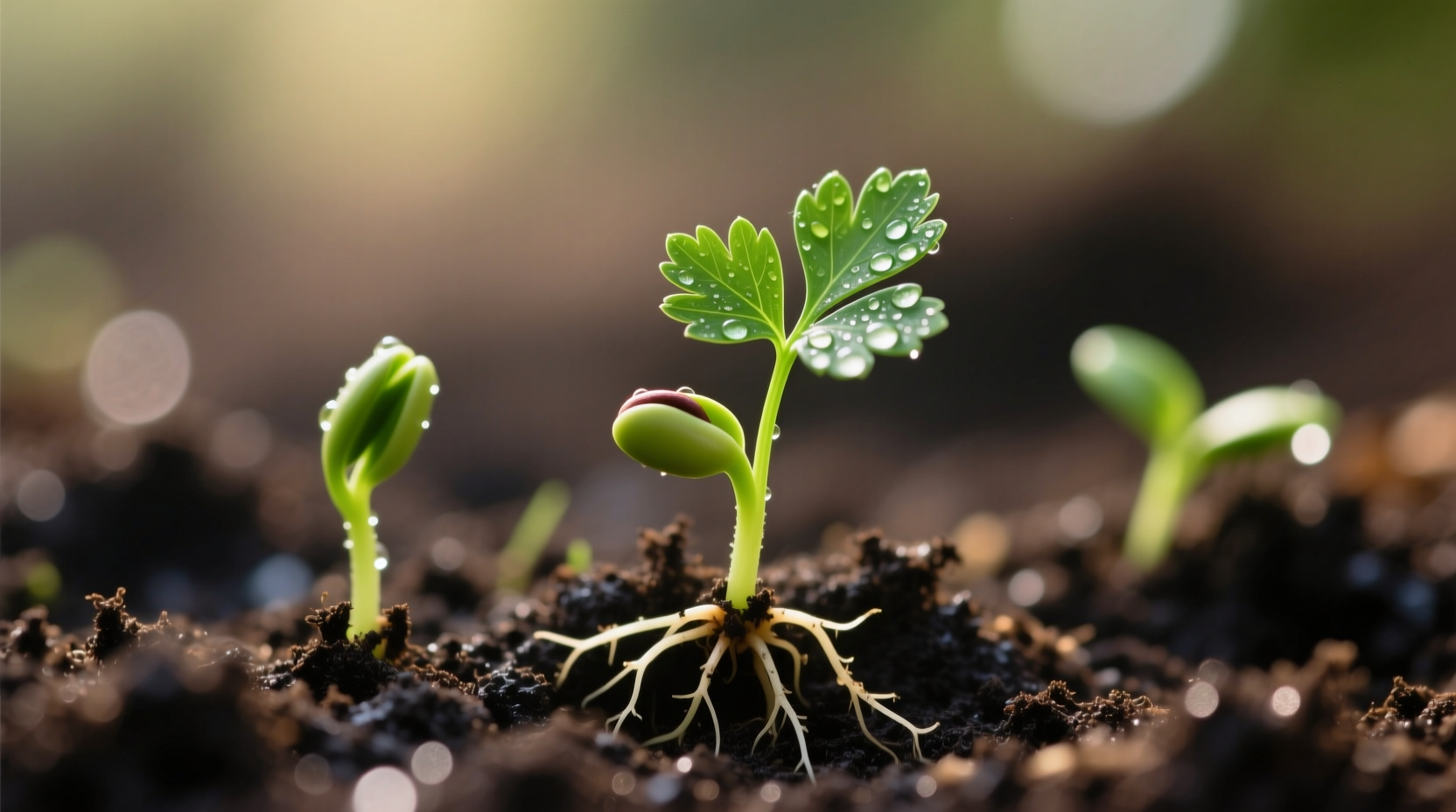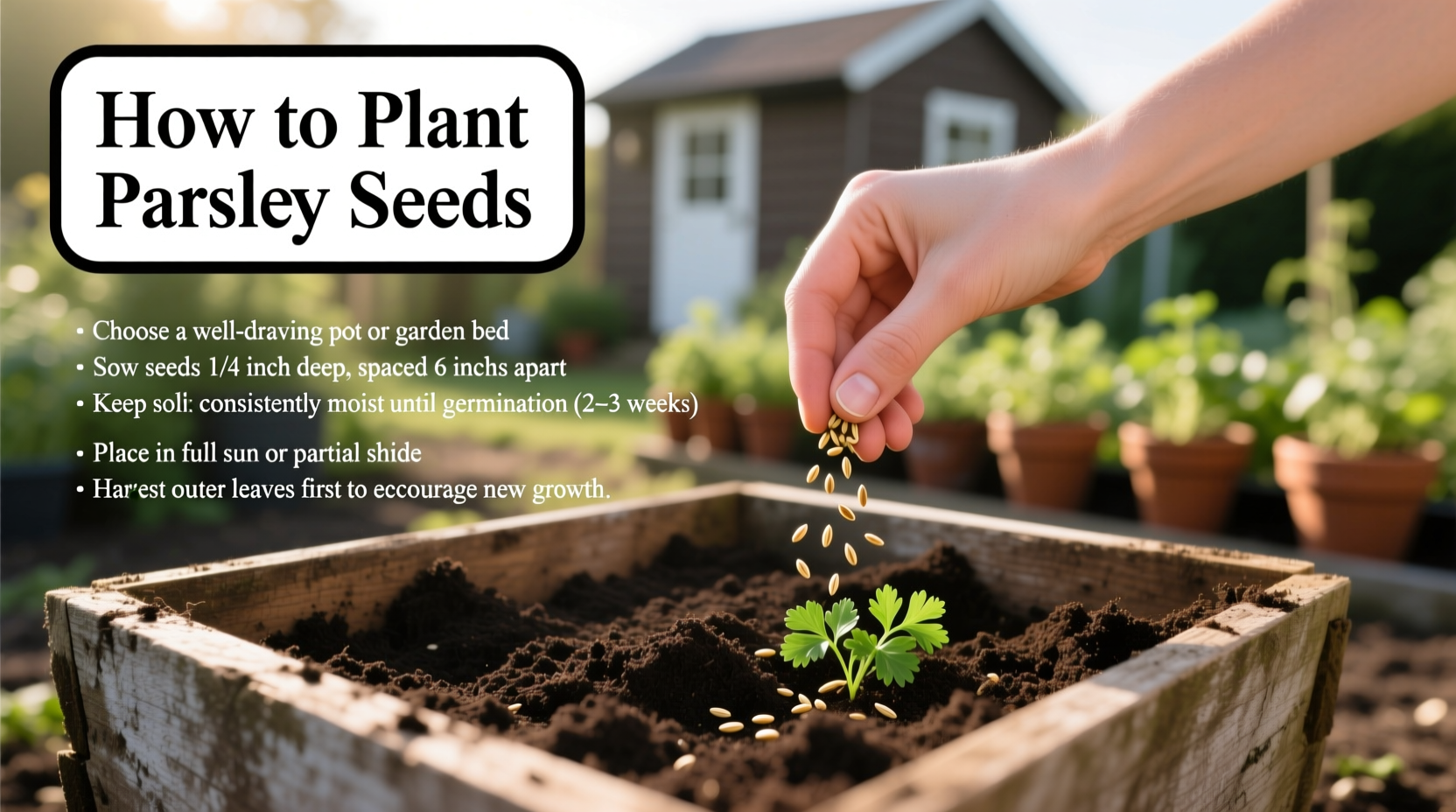Discover the simple steps to grow vibrant parsley from seeds with this comprehensive guide. Whether you're a beginner gardener or expanding your herb collection, you'll learn exactly how to plant parsley seeds for healthy, productive plants that yield fresh flavor for months. Our research-backed methods ensure higher germination rates and stronger plants than generic advice found elsewhere.
Why Parsley Deserves a Spot in Your Garden
Parsley isn't just a garnish—it's a nutritional powerhouse packed with vitamins K, C, and A. Unlike store-bought options that lose flavor quickly, homegrown parsley provides superior taste and freshness for your culinary creations. Growing from seeds saves money compared to purchasing established plants and gives you access to unique varieties like Italian flat-leaf or curly parsley that grocery stores rarely carry.
Your Parsley Planting Timeline: From Seed to Harvest
Understanding the growth stages helps set realistic expectations. According to the USDA Plant Hardiness Zone Map, parsley follows this predictable timeline when planted correctly:
| Stage | Timeframe | Critical Actions |
|---|---|---|
| Seed Sowing | Early spring (indoor) or after last frost (outdoor) | Plant 1/4 inch deep in moist soil |
| Germination | 14-28 days | Maintain consistent moisture, 70°F temperature |
| Seedling Establishment | 4-6 weeks after germination | Thin to 6-8 inches apart, begin light feeding |
| First Harvest | 8-10 weeks after planting | Take outer leaves, never more than 1/3 of plant |
| Peak Production | 3-6 months | Regular harvesting encourages new growth |
Preparing for Planting Success
Before handling seeds, gather these essential supplies:
- High-quality parsley seeds (preferably within 1 year of packaging date)
- Seed starting mix or well-draining potting soil
- Containers with drainage holes (2-3 inches deep for starting)
- Gentle water source (spray bottle recommended)
- Heat mat (optional but improves germination)
- Grow lights or sunny windowsill (6+ hours of light)
Timing matters significantly for how to plant parsley seeds outdoors successfully. The University of California Cooperative Extension recommends starting seeds indoors 8-10 weeks before your last expected frost date. For direct sowing outdoors, wait until soil temperature reaches at least 50°F (10°C) as measured by a soil thermometer.
Step-by-Step Planting Process
Soil Preparation: Creating the Perfect Foundation
Parsley thrives in rich, well-draining soil with a pH between 6.0-7.0. Amend garden beds with 2-3 inches of compost worked into the top 6-8 inches of soil. For container growing, use a high-quality potting mix—never garden soil which compacts in containers. Fill containers leaving 1 inch of space below the rim to prevent soil spillage when watering.
Sowing Seeds: Precision Matters
Contrary to many gardening myths, how deep to plant parsley seeds significantly impacts germination success. Follow these exact steps:
- Moisten soil thoroughly before planting (should feel like a damp sponge)
- Place seeds on surface, spacing 2 inches apart
- Cover with exactly 1/4 inch of soil—no more
- Gently mist surface to settle soil without displacing seeds
- Cover container with plastic wrap to maintain humidity
- Place in warm location (70°F/21°C ideal)
For growing parsley from seeds for beginners, consider this professional tip: soak seeds in warm water for 24 hours before planting to soften the hard seed coat and improve germination rates by up to 30%, according to research from the Royal Horticultural Society.
Watering Wisdom: The Moisture Balance
Maintain consistent moisture during germination—dry spells cause seeds to die, while overwatering leads to damping-off disease. Check soil twice daily by touch; it should feel moist but not soggy. Once seedlings emerge, remove plastic covering and water when top 1/2 inch of soil feels dry. Always water at soil level to prevent fungal diseases.
Transplanting and Outdoor Care
When seedlings develop their second set of true leaves and reach 2-3 inches tall, they're ready for transplanting. Harden off plants gradually over 7-10 days by increasing outdoor exposure daily. Choose a location with partial shade in hot climates or full sun (6+ hours) in cooler zones.
Space plants 6-8 inches apart in rows 12 inches apart. The University of Minnesota Extension notes that proper spacing prevents disease and maximizes air circulation. Mulch around plants with 1-2 inches of straw to maintain soil moisture and temperature.
Troubleshooting Common Challenges
Understanding why parsley seeds won't germinate saves frustration. Common issues include:
- Old seeds: Parsley seeds lose viability after 1-2 years—always check packaging date
- Incorrect depth: Planting deeper than 1/4 inch prevents sprouting
- Inconsistent moisture: Seeds need constant dampness during germination
- Cold soil: Below 50°F significantly delays or prevents germination
Yellowing leaves often indicate overwatering or nutrient deficiency. Apply a balanced liquid fertilizer every 4-6 weeks during growing season. Watch for aphids and treat with insecticidal soap at first sign of infestation.

Harvesting for Maximum Flavor and Yield
Wait until plants have 10-15 leaves before harvesting—this ensures strong root development. Always cut outer stems first using clean scissors, never pulling plants. Harvest in the morning when essential oils are most concentrated for best flavor. Never remove more than one-third of the plant at once to maintain productivity.
For continuous harvest, practice "cut-and-come-again" harvesting. The flavor intensifies after flowering, but the plant will die after setting seed. To extend harvest season, pinch off flower buds as they appear. In colder climates, mulch heavily for potential second-year growth.
Seasonal Considerations for Year-Round Success
Understanding your USDA hardiness zone determines your planting strategy. In zones 4-7, start seeds indoors early spring. In zones 8-10, plant in fall for winter harvest. Container-grown parsley can be brought indoors before first frost for year-round production.
During summer heat waves, provide afternoon shade to prevent bolting. In winter, protect outdoor plants with row covers when temperatures drop below 20°F (-7°C). Remember that parsley is a biennial—it focuses on leaf production in year one and flowers in year two.
Pro Tips for Exceptional Results
- Rotate planting locations annually to prevent soil-borne diseases
- Companion plant with tomatoes, asparagus, or carrots for mutual benefits
- Save seeds from second-year plants for future planting
- Freeze chopped parsley in olive oil for winter cooking
- Use bottom-watering technique to encourage deeper root growth











 浙公网安备
33010002000092号
浙公网安备
33010002000092号 浙B2-20120091-4
浙B2-20120091-4